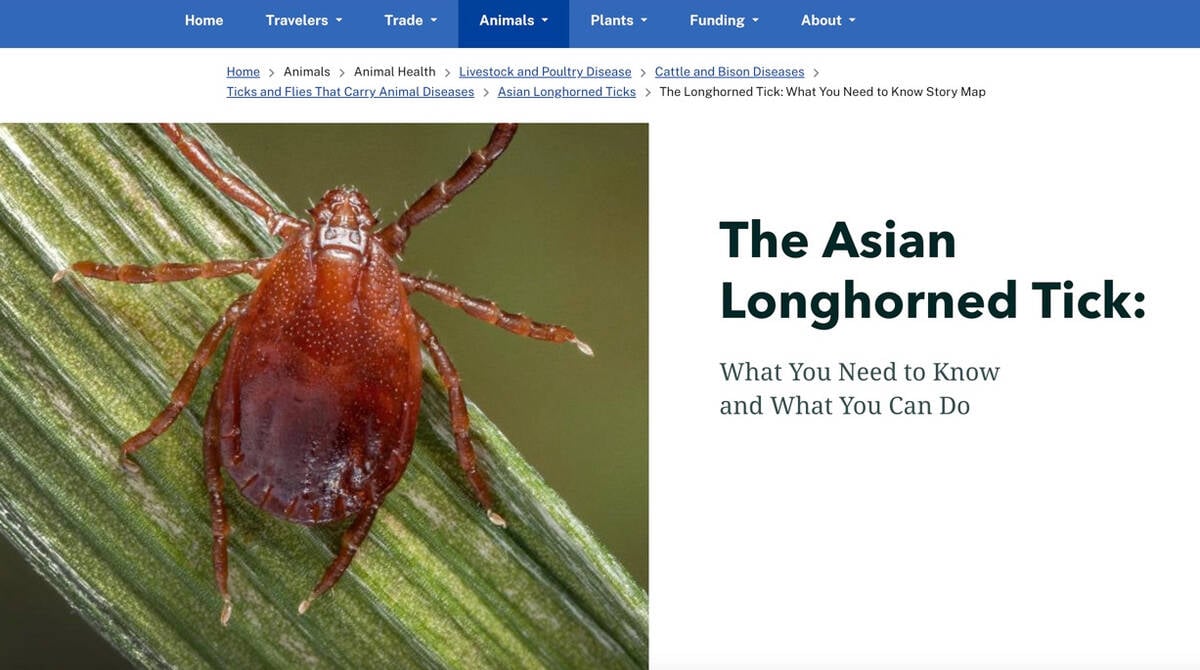The trend in the hog industry toward ever larger production units integrated with big food companies leaves many small, independent producers wondering if they can survive.
But speakers at the Saskatchewan Pork Industry Symposium last week in Saskatoon said smaller producers might be able to prosper if, through co-operation and networking, they take on some attributes of bigger operations.
Chris Hurt, a University of Illinois professor teaching agricultural marketing, said there have been predictions for years that the hog industry would go the way of the chicken broiler sector.
Read Also

New World screwworm not seen as trade threat
Canadian cattle producers shouldn’t be worried about the New World screwworm, which has become a massive concern for ranchers in Mexico and is threatening the southern United States
In the U.S. most broiler production is controlled by a handful of big companies such as Tyson Foods.
Consumer demand and competition is pushing all agricultural commodity production, including hogs, toward lower costs, narrower profit margins, higher technology and more standardization, he said.
That hurts small, independent producers.
“The current rate for small operations (1,000 head or less) in the United States is about three percent of production a year getting out of business,” he said, adding the fastest decline is in units with 100 or fewer sows.
The decline is greatest in the northern Midwest and the Dakotas.
However, Hurt said the situation is an opportunity for Canadian hog producers, especially if they consider that pork consumption globally is increasing at about four percent a year.
Independent producers can get a piece of the action if they go about it the right way.
Alliances work
“If you get to 600 sows you can implement a lot of the new technologies. But if you can’t, look for ways for you to network, form alliances with others to try to look big, but not be big,” he said.
Jurgen Preugschas of Mayer-thorpe, about 100 kilometres west of Edmonton, is part of a group doing just that.
Preugschas and four partners formed Peak Swine Genetics about a year ago.
Each partner had a successful, independent purebred business, but could read the writing on the wall.
“We identified that we were losing a lot of our customer base,” he said.
“The under 1,000 head hog producer is falling by the wayside rapidly … to sell (breeding stock) to the small producer was no problem, but in the new operations, that is the 500, 1,000, 2,000 sow operations, it didn’t make sense for us to bid on it because our health status wasn’t adequate, our numbers weren’t adequate.”
For a couple of years several independent pure-bred breeders discussed the idea of a co-operative. Eventually, about 10 co-operated in hiring a consultant to do a feasibility study. Five signed on to the proposed structure and formed a separate company, Peak Swine, with all partners as shareholders.
Each of the partner’s individual units supply purebred piglets to the company’s segregated early weaning unit. The pigs are weaned at seven to 11 days and transported to the early weaning unit where they are fed for six weeks.
The company has contracted barns around Alberta to take the pigs for finishing, he said. From there, animals are sold as breeding stock or go to market.
So far, the arrangement was worked well. By joining forces, the group was able to hire sales staff to find new customers.
“Our salesman is picking up a brand new client base. We, as individuals, are selling to our old customers, but he is out there picking up new ones,” he said, adding most of the new business is with bigger operations.
Each of the partners is expanding his home breeding herd. “We still don’t have the numbers to meet sales,” he said.
The group attracts customers with prices slightly lower than its international competitors. It can do this because it doesn’t have the royalty fees its competitors must pay to their head offices.
Locally owned
“Also, we are totally western Canadian owned and people like that. They don’t like to see their money going to multi-national companies.
“Also, genetically, we don’t take second place to anyone.”
Another form of co-operation is finding success in southern Ontario where the S-X Group of pork producers has joined forces to buy inputs in bulk in pursuit of lower prices.
Kevin Kimball, of Leamington, Ont., said the group was formed in the early 1980s and is run much like a co-op. It now has 18 members.
Members buy their pre-mix, soy meal, fuel, chemicals, seed and health products through the group. They have also tendered for equipment and, in the early days when most members had young families, they bought group health insurance.
“One of the hardest things for us to accept when starting was the loss of independence,” he said, adding it was difficult to hand over negotiations to someone else.
But the savings have been dramatic, especially for pre-mix, he said.
The group also gets together monthly to exchange information. Often it invites speakers to update members on production and marketing issues.
Kimball believes by working together, members have acquired similar costs of production as much bigger operations and have become competitive enough to survive.














